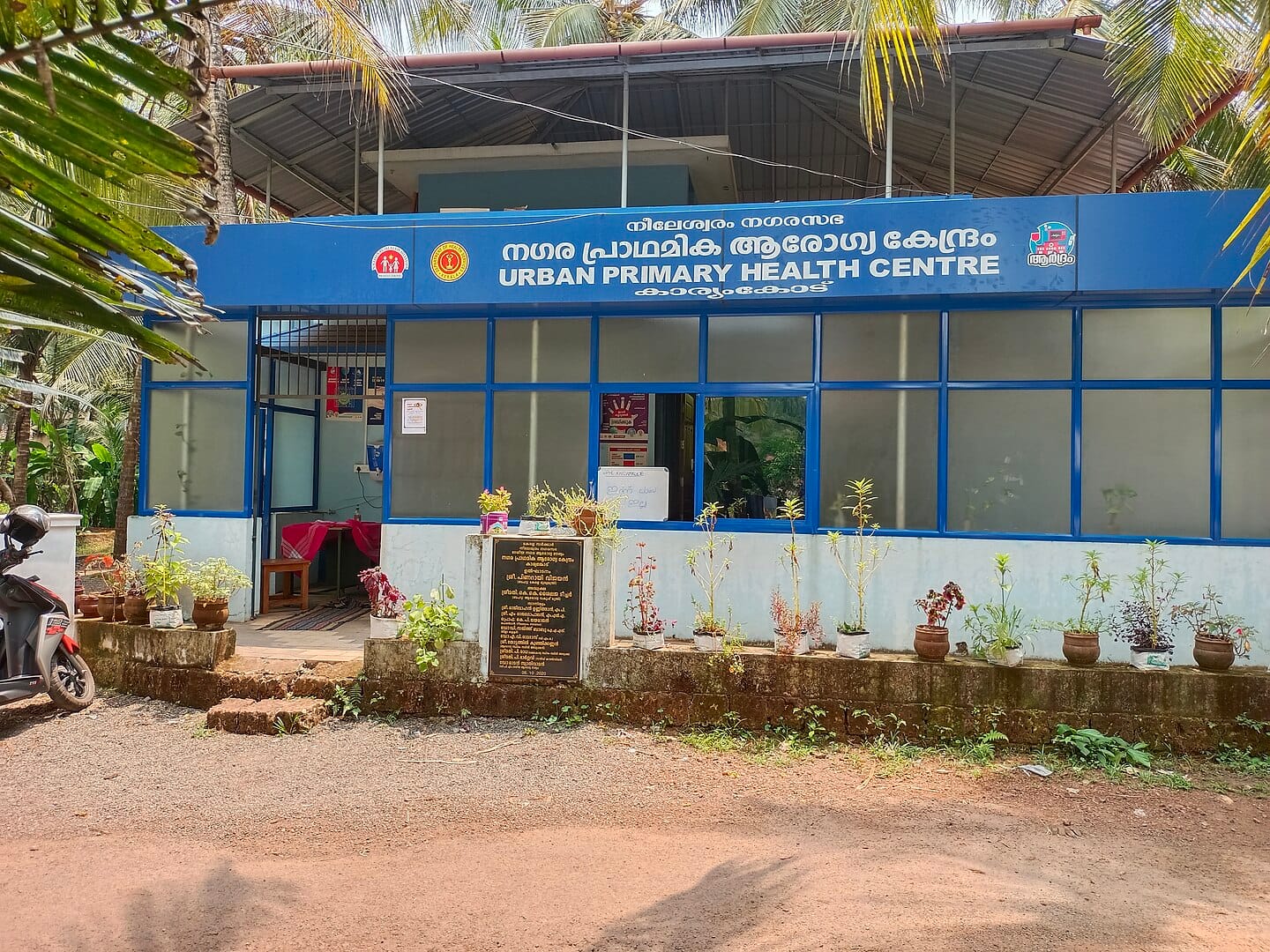By Akshita Prasad
Copyright feminisminindia

Women’s healthcare, especially reproductive healthcare, is often sidelined. Maternal and neonatal healthcare standards in the country can be shockingly lax. Gaps in healthcare access, lack of awareness, poverty, and institutional failings can all contribute to the dismal state of maternal and neonatal care infrastructure in most states. Drastic differences are also noted across states in care standards and health outcomes. However, one Indian state that has seen some success in this regard is Kerala.
Data from a Sample Registration System (SRS) report revealed that Kerala had the country’s lowest infant mortality rate (IMR) at 5 per 1000 live births in 2023. To put this figure into context, India’s average stands at 25. The second lowest IMR of 12 was found in Tamil Nadu. Chhattisgarh, Madhya Pradesh, and Uttar Pradesh had the highest IMR in the country at 37. However, the SRS report isn’t comprehensive, as it doesn’t contain data for some north-eastern states.
The infant mortality rate (IMR) is an indicator of health. It measures how many children, in every 1000 live births, die within the first year of life. The IMR is crucial, not only to understand the status of infant health in the country, but also the general state of healthcare and access to it. It also sheds light on the socio-economic realities of communities because better socio-economic conditions are associated with improved IMR outcomes.
Kerala’s IMR has seen an encouraging declining trend since 2015. With an IMR of 12 in 2015, the state successfully reduced this number to 5 by 2023. This also positions Kerala ahead of or on par with many other developed countries. The United States, for instance, recorded an IMR of 5.6 in 2024.
The same data revealed that Kerala saw pregnant persons receiving institutional medical attention during delivery in 99.6 per cent of live births, which is the second highest after Tamil Nadu and Telangana (99.9 per cent). The state also has one of the lowest maternal mortality rates (MMR). Kerala’s MMR was 19 for the 2018-2020 period, whereas the national average was 97.
Gaps in maternal and neonatal healthcare
India’s maternal and neonatal care infrastructure can be inadequate and inaccessible for many. A 2023 UN report noted that India recorded the highest numbers of maternal deaths, stillbirths, and neonatal deaths globally in 2020, accounting for 17 per cent of such deaths worldwide. The report also highlighted that three major interventions can prevent this: adequate antenatal care, having a skilled birth attendant, and receiving postnatal care immediately after delivery.
Another UN report found that India recorded nearly 52 maternal deaths a day in 2023. Making India the country with the second-highest MMR in the world, along with the Democratic Republic of Congo. These deaths were found to be preventable, with causes including haemorrhage, infections, and unsafe abortions, all of which could be addressed with better healthcare interventions and improved access.
Access to and utilisation of maternal, antenatal, and postnatal care services were also not the same for all pregnant persons. Those in rural areas and the urban poor were found to be more likely to be unable to access such care. One study regarding the utilisation of maternal healthcare services in urban slum settings found that unsafe home births still prevailed due to various causes, including non-proximity to healthcare centres, costs associated with travel and equipment, domestic responsibilities, long wait times, lack of information, and lower levels of education (especially among mothers). Another study examining utilisation of maternal and neonatal healthcare services in rural India found similar issues of access and awareness.
While India has seen a remarkable decline in MMR and IMR since the year 2000, many more gaps still need to be addressed. Recently, in MP’s Indore, two newborns died after being bitten by rats in the NICU of the state’s largest government hospital. While the hospital claims the children were born with congenital issues, which caused their deaths, the Deputy Medical Superintendent of the hospital said the second child’s condition worsened due to septicaemia. Septicaemia can lead to sepsis, which is a life-threatening condition. While septicaemia has various causes, rat bites cause it, too.
In 2023, 16 infants died in a Maharashtra hospital due to a shortage of medicines and staff. In June 2025, a woman and her newborn died in UP, after which the hospital was found to be operating without any registration. In August 2025, a UP man took the corpse of his dead newborn to the DM’s office, alleging medical negligence. The man claimed the private hospital he took his wife to kept asking him for increasing amounts of money, refused to perform the delivery in time, and then made his wife leave the hospital premises while she was in labour.
Recently, the CMO of UP’s Gonda was found callously dismissing and minimising the death of newborns in an unregistered nursing home in the district. In a video shared online, she was seen saying, “Everyone rushes here because of the death of one child, but thousands are alive, go have some ladoos.” These are only a handful of numerous such cases. From being denied access to hospitals, being charged exorbitant amounts, and receiving subpar healthcare, India’s maternal and neonatal health landscape is a quagmire of inadequacies and apathy.
However, Kerala’s success can be attributed to bridging some of these gaps. The state has introduced many programmes to address maternal and neonatal health. Over the past decade, antenatal and neonatal care services have been expanded. Hospitals have been upgraded to improve the quality of facilities and care. Sixteen government facilities in the state hold LaQshya accreditation, and six hold MusQan accreditation, government standards for labour and healthcare facilities, set to improve the quality of care and reduce maternal and infant mortality. The state government also has screening programmes in place to identify congenital issues, free transportation to ensure timely access to health services, the establishment of health facilities in tribal areas, and government-funded treatment for genetic disorders.
The state’s ASHA workers have also played a significant role. The chairperson of the NHRC recently acknowledged the role of ASHA workers in reducing the IMR in India. ASHA workers do critical work at the grassroots level in disseminating health information and encouraging the utilisation of health services. Their role is especially indispensable in underserved areas. However, despite the positive health outcomes due to their tireless efforts, ASHA workers remain poorly compensated. ASHA workers in Kerala are currently protesting for fair wages and retirement benefits, as well as recognition as workers, rather than volunteers.
Minimising and dismissing risks associated with childbirth
While physical inaccessibility, inadequate infrastructure, and subpar care keep India’s IMR and MMR high, these aren’t the only issues plaguing maternal and neonatal care. From anti-choice abortion discourse to film and television, our culture tends to position childbirth as the biological destiny of women, minimising the physical risks and mental toll it takes.
Cultural norms tend to overlook the physical, mental, and emotional toll of pregnancy by dismissing it as something women have been doing for centuries. This, along with an overreliance on traditional wisdom and dated ideas of care, instead of medical opinion, can reduce utilisation of health services, even where such services exist and are accessible. The role that sexism and misogyny, within the familial, community, and institutional spheres, play in sanitising the realities of pregnancy and childbirth can worsen the situation for pregnant persons.
Without the acknowledgement of risks associated with pregnancy and childbirth, the need for health interventions also goes unacknowledged. Even pregnant persons who internalise this can opt for unsafe practices without fully understanding the risks to themselves and their child. This can have healthcare implications, such as an increase in home births and a lack of adequate nutrition and rest. Despite Kerala’s enviable MMR, home births remain a concern.
Women’s limited agency to make their healthcare decisions and diminished bodily autonomy in patriarchal societies further exacerbate this issue. Women’s decreased autonomy in the domestic sphere can mean that families make healthcare decisions on their behalf. A report by The Hindu found that women who don’t seek antenatal care often don’t do it of their own volition. In 28 per cent of cases, husbands of families deemed such care unnecessary and barred women from seeking it. This could also potentially explain why Kerala performs better. While it would be erroneous to say that women in the state have achieved gender parity, inequalities can be slightly less stark. Data support this.
The aforementioned studies, examining healthcare access and utilisation in rural India and among the urban poor, found that the mother’s level of education was critical to whether health services offered were fully utilised. The study examining utilisation in rural India also noted that this is not only a consequence of the positive relationship between education and greater health literacy, but is also a result of educated women having greater autonomy within their homes, more decision-making powers, and being more equipped to navigate the healthcare system.
Kerala’s efforts in addressing gaps in maternal and neonatal care to achieve lower MMR and IMR rates can be a roadmap for the rest of the country. However, even in Kerala, the task of further reducing these numbers and ensuring these outcomes extend to even the most vulnerable and underserved populations remain. Most maternal and neonatal deaths are preventable with timely and adequate health interventions. Prioritising women’s healthcare is an urgent need in India, and one that is long overdue.



